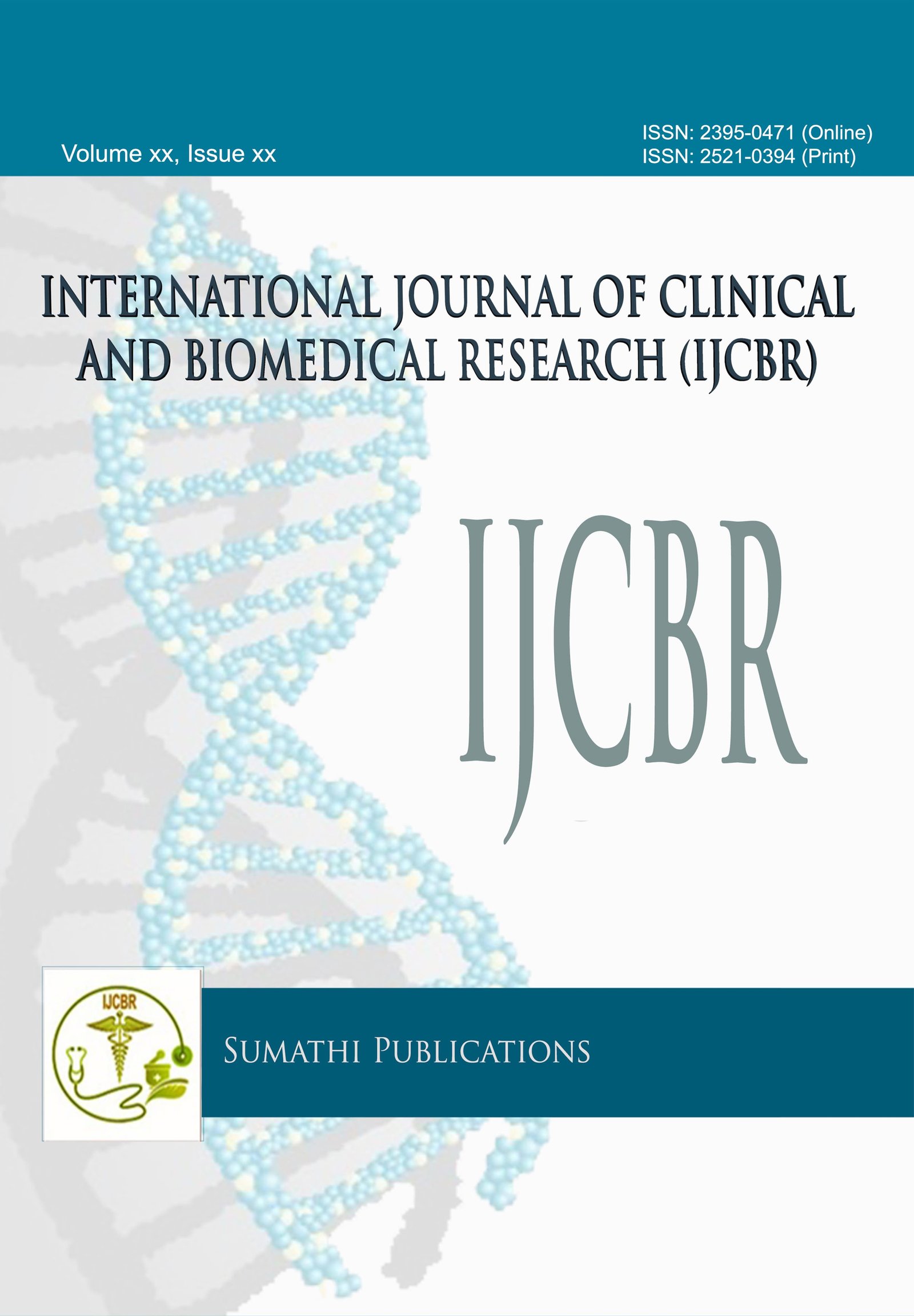PROTECTIVE EFFECT OF DIOSGENIN AGAINST CARBON TETRACHLORIDE AND CISPLATIN INDUCED HEPATOTOXICITY IN RATS
DOI:
https://doi.org/10.31878/ijcbr.2018.43.11Abstract
Background: Activation of hepatic stellate cells (HSC) plays central role in the development of liver fibrosis. In HSC activation, the transforming growth factor-1 (TGF-1) is considered to be the main stimuli factor. Diosgenin are the steroidal saponin and found in Trigonella foenum graecum Linn (Fenugreek) and some other species of Dioscorea. Diosgenin attenuates HSC activation by inhibiting transforming growth factor. Aim: In present study an attempt was made to explore the effect of diosgenin on liver fibrosis. Methods: Liver fibrosis was induced in rats by carbon tetrachloride (CCl4) 1 ml/kg intraperitoneally twice a week for 28 days and cisplatin 3mg/kg intraperitoneally at 0, 1, 3 week for 4 weeks. The extent of liver fibrosis was assessed by measuring the weight of liver and levels of total bilirubin (TBL), hydroxyproline (HP) and serum enzymes due to deposition of extracellular matrix (ECM). Results: The administration of diosgenin reduced the liver weight of CCl4 and cisplatin treated animals and reduced the TBL, HP level and serum enzymes significantly and inhibited liver fibrosis induced by CCl4 and cisplatin. Conclusion: The result obtained in the present investigation, Diosgenin treatment exerted significant hepatoprotective effect in animals by inhibiting ECM deposition and HSCs activation.
Downloads
Downloads
Published
Issue
Section
License
The journal allows the author(s) to hold the copyright without restrictions and will retain publishing rights without restrictions.
The submitted papers are assumed to contain no proprietary material unprotected by patent or patent application; responsibility for technical content and for protection of proprietary material rests solely with the author(s) and their organizations and is not the responsibility of the journal. The main (first/corresponding) author is responsible for ensuring that the article has been seen and approved by all the other authors. It is the responsibility of the author to obtain all necessary copyright release permissions for the use of any copyrighted materials in the manuscript prior to the submission.
What are my rights as an author?
It is important to check the policy for the journal to which you are submitting or publishing to establish your rights as
Author. Journal's standard policies allow the following re-use rights:
- The journal allows the author(s) to hold the copyright without restrictions.
- The journal allows the author(s) to obtain publishing rights without restrictions.
- You may do whatever you wish with the version of the article you submitted to the journal.
- Once the article has been accepted for publication, you may post the accepted version of the article on your own personal website, your department's website or the repository of your institution without any restrictions.
- You may not post the accepted version of the article in any repository other than those listed above (i.e. you may not deposit in the repository of another institution or a subject-matter repository) until 12 months after publication of the article in the journal.
- You may use the published article for your own teaching needs or to supply on an individual basis to research colleagues, provided that such supply is not for commercial purposes.









